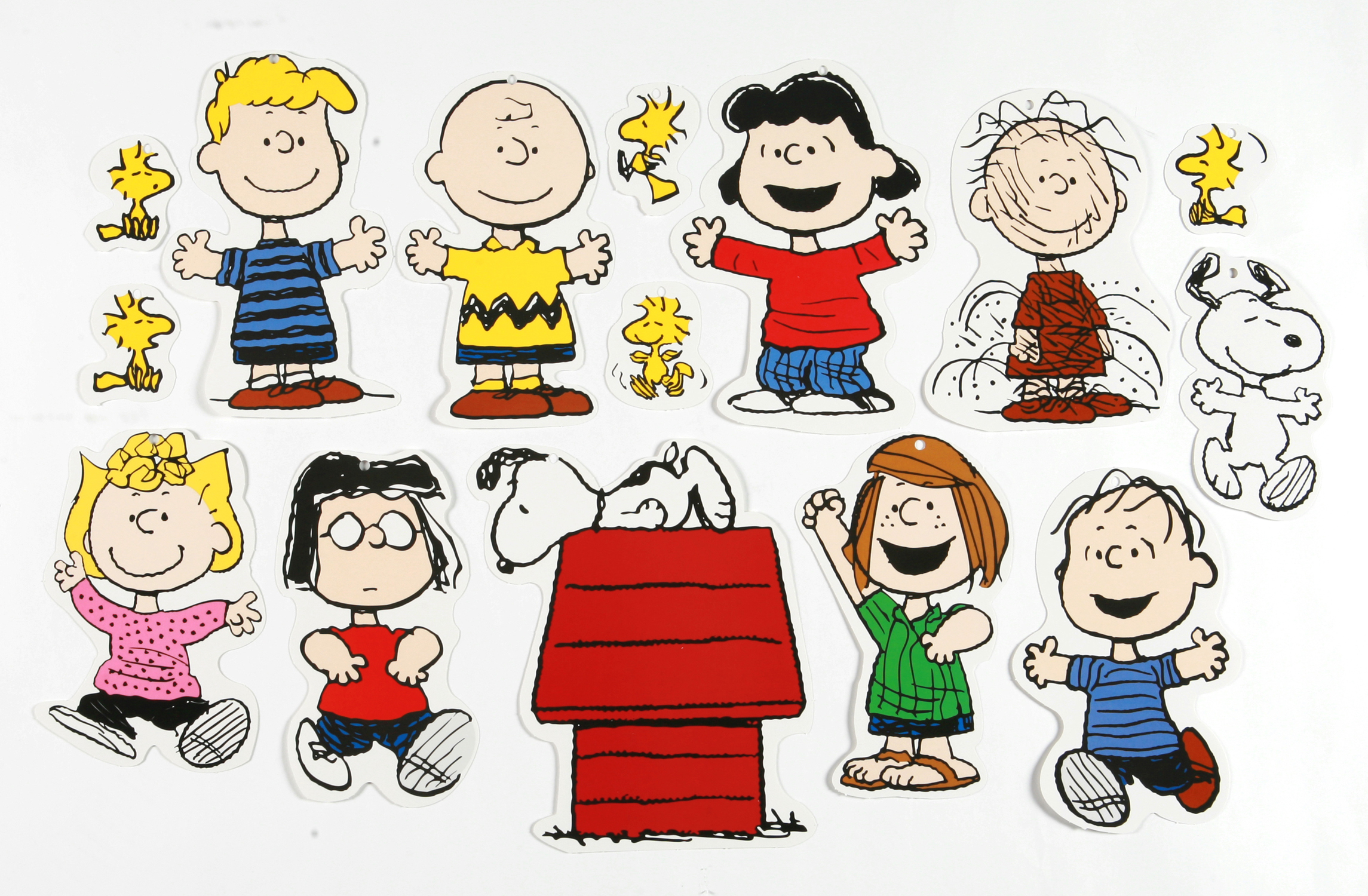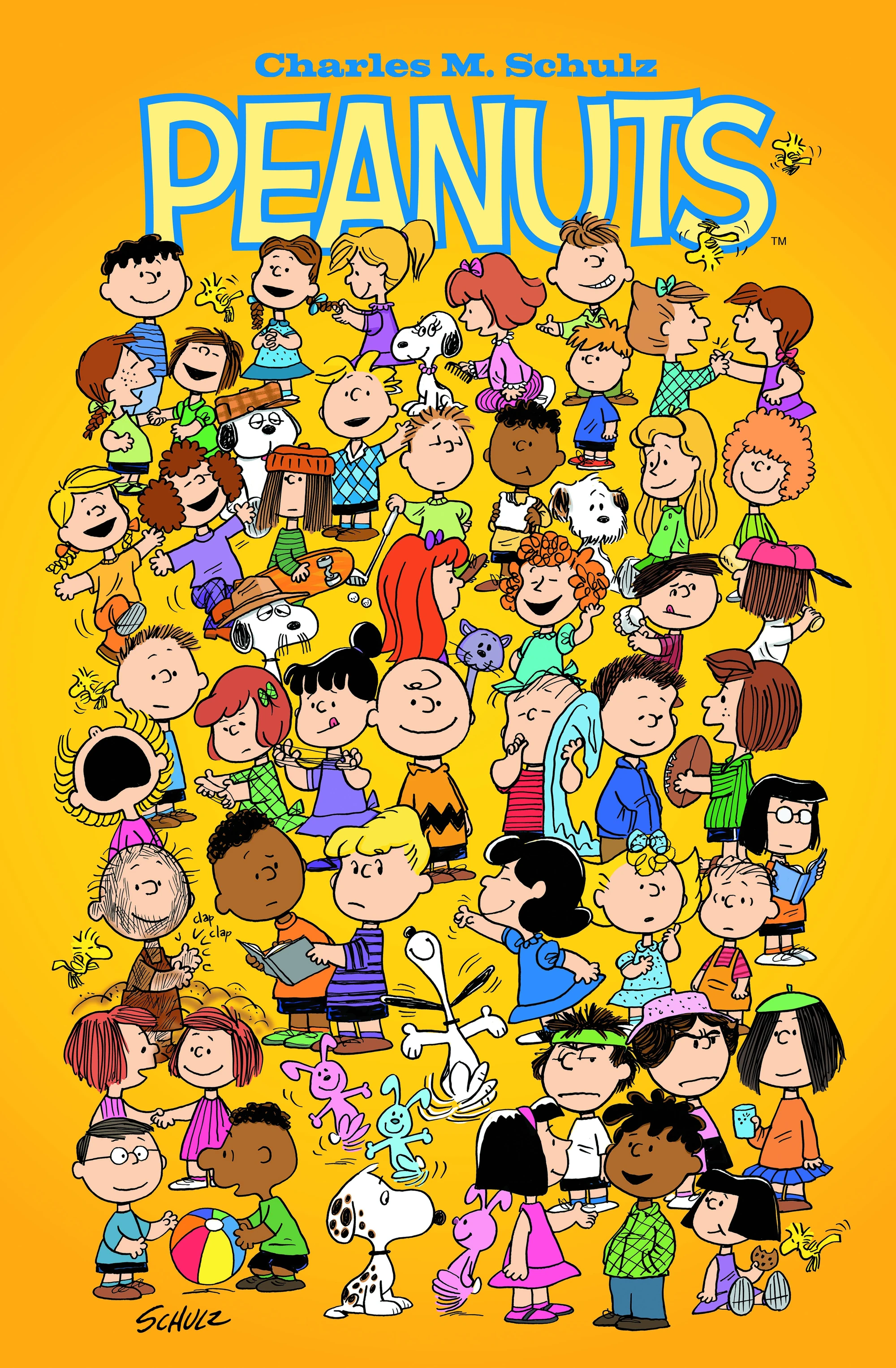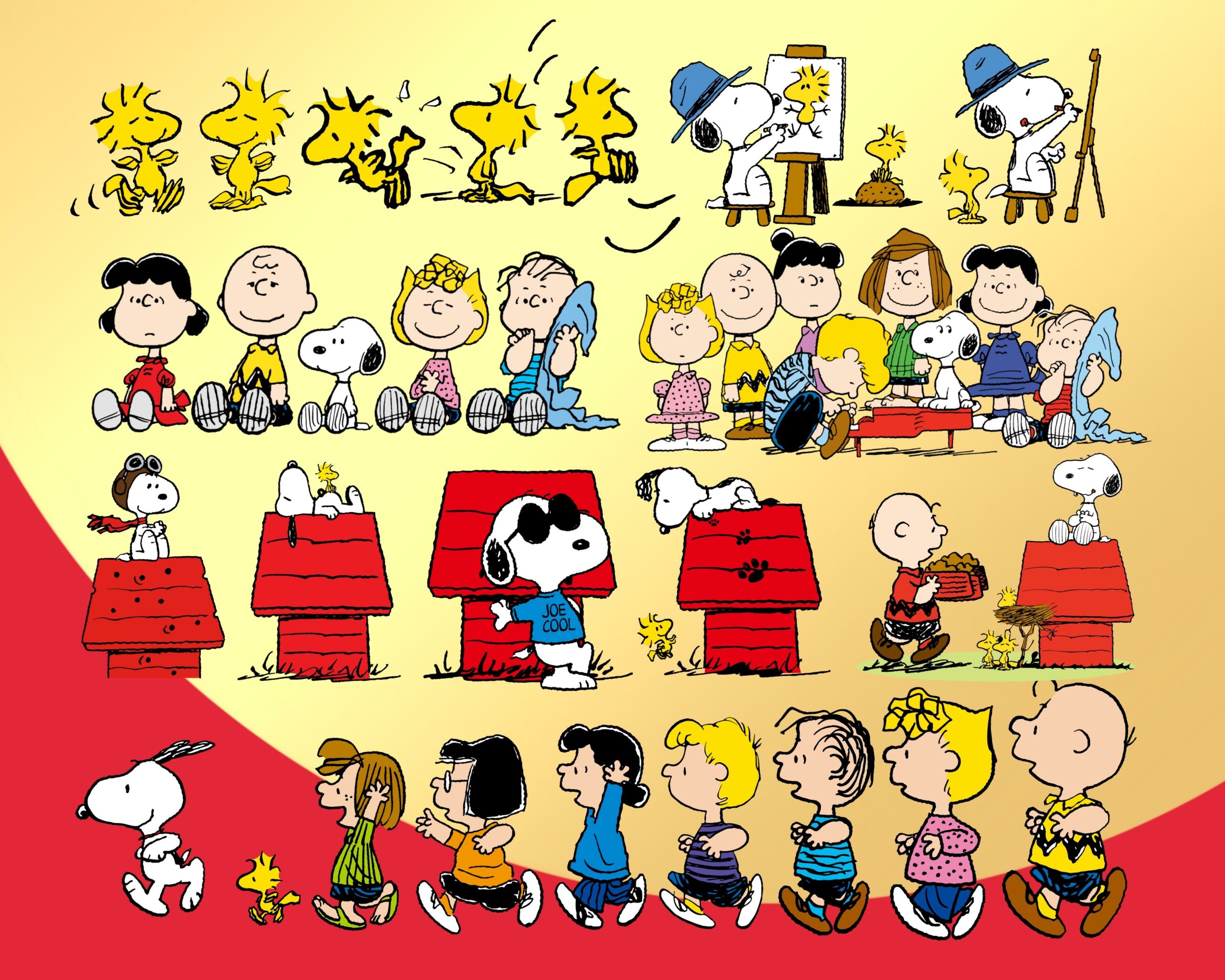Peanuts Characters: Dates, Traits & More - A Comprehensive Guide
Isn't it fascinating how a comic strip, born in the mid-20th century, could weave its way into the hearts of millions and remain a cultural touchstone for generations? The enduring power of "Peanuts" lies not just in its simple art style, but in its profound exploration of childhood, loss, and the everyday struggles we all face, making it a timeless reflection of the human condition.
From its humble beginnings on October 2, 1950, as a syndicated comic strip, "Peanuts" created by Charles M. Schulz, quickly became a global phenomenon. The strip, initially appearing in just seven newspapers, grew to grace the pages of thousands across the globe, captivating readers with its cast of quirky, relatable characters. These characters, with their distinct personalities and individual struggles, allowed readers of all ages to see pieces of themselves reflected in the world of Charlie Brown, Snoopy, Lucy, Linus, and the rest of the gang. The franchise expanded beyond the comic strip, branching out into television specials, animated films, stage productions, and even theme park attractions, ensuring that the "Peanuts" legacy would continue to evolve and resonate with audiences.
| Character | Description | Key Traits | First Appearance | Memorable Quotes |
|---|---|---|---|---|
| Charlie Brown | The central character and everyman of the strip; often depicted as a lovable loser. He is the center of the strip's world. | Insecurity, perseverance, kind-hearted, prone to bad luck. Regarded as an embarrassment and a loser by other children and is strongly disliked and rejected by most of them. | October 2, 1950 (Having previously appeared in Li'l Folks starting in 1948) | "Good grief!" |
| Snoopy | Charlie Brown's pet beagle; a complex character with a rich inner life, often escaping into elaborate fantasies. | Imaginative, loyal, confident (in his fantasies), prone to writer's block, multi-talented. | October 4, 1950 | "Happiness is a warm puppy." |
| Linus van Pelt | Charlie Brown's best friend; known for his security blanket and philosophical musings. | Intelligent, thoughtful, dependent on his blanket, a voice of reason. | September 19, 1954 | "There is no problem so big or so complicated that it cannot be run away from." |
| Lucy van Pelt | Linus's older sister; bossy, crabby, and often dispensing (unsolicited) advice from her psychiatrist's booth. | Bossy, opinionated, self-assured, often insensitive, and has a crush on Schroeder. | March 3, 1952 | "The doctor is in." |
| Schroeder | A music-loving boy obsessed with Beethoven; often annoyed by Lucy's affections. | Dedicated to music, serious, talented, generally unimpressed by others. | May 30, 1951 | "I'm a serious musician." |
| Sally Brown | Charlie Brown's younger sister; naive and often misinterprets the world. | Innocent, dependent on Charlie Brown, often asking for favors. | August 22, 1959 | "Happiness is a warm puppy." |
| Peppermint Patty | A confident and athletic girl; often oblivious to social cues. | Confident, athletic, a bit clueless, good-hearted. Friend of Franklin. | August 22, 1966 | "I got a C+ on my book report. That's a plus, right?" |
| Woodstock | Snoopy's best friend, a small yellow bird. | Loyal, good-natured, difficult to understand (speaks in chirps). | April 4, 1967 | Chirp chirp |
| Franklin | A friend of Peppermint Patty; introduced to bring diversity to the strip. | Kind, understanding, a good friend. | July 31, 1968 | "That's cool." |
| Rerun van Pelt | Lucy and Linus's younger brother. | Curious, innocent, often seen on the back of his mother's bicycle. | March 26, 1958 | Often has humorous outlook on life. |
| Patty | One of the original characters. Often seen with Violet. | A core part of the comic's early history, teased Charlie Brown often | October 2, 1950 | - |
| Violet | Often seen with Patty | Teased Charlie Brown often | February 7, 1951 | - |
| Shermy | One of the very first characters introduced, never found a handle like the other kids. | His few idiosyncrasies eventually went to other characters. | October 2, 1950 | - |
For further in-depth information and insights into the "Peanuts" characters, their development, and the legacy of Charles M. Schulz, you can visit the official Peanuts website, which provides a wealth of information, including character bios, a timeline of key events, and a gallery of original comic strips. Visit the official Peanuts website.
The world of "Peanuts" is populated by an array of characters, each bringing a unique flavor to the strip. Charlie Brown, the ever-optimistic underdog, is the anchor of the narrative, consistently facing setbacks with a stoic determination. His best friend, Linus, provides a calming presence with his philosophical insights and unwavering attachment to his security blanket. Lucy, his crabby older sister, offers sharp wit and a penchant for giving unsolicited advice, often from her famous psychiatric booth. Snoopy, the imaginative beagle, escapes into a world of fantasy, taking on roles from a World War I flying ace to a celebrated author. The cast expanded over the years to include characters like Sally, Charlie Brown's younger sister, who offered a fresh, more innocent perspective; Peppermint Patty, the confident athlete who often misunderstands social situations; and Woodstock, Snoopy's loyal bird companion. The diversity of these characters, and their interaction, created a rich tapestry that reflected the complexity of childhood and the universal human experience.
The evolution of the "Peanuts" characters is as fascinating as the stories themselves. Characters developed their distinct personalities over time. Charlie Brown's insecurity and perseverance in the face of defeat became lasting hallmarks. Snoopy's inner life became increasingly elaborate. Lucy's bossiness was amplified, and Linus's reliance on his blanket became a symbol of security and comfort. Even minor characters, like Shermy, who had a brief stint in the spotlight, contributed to the overall dynamic of the strip, and their traits, like the few idiosyncrasies, eventually went to other characters.
The legacy of "Peanuts" extends far beyond the pages of the comic strip. The characters were licensed for use in various forms, including the national amusement park chain Cedar Fair. The images of the "Peanuts" characters are used frequently, most visibly in several versions of the logo for flagship park, Cedar Point. Knott's Berry Farm, which was later acquired by Cedar Fair, was the first theme park to make Snoopy its mascot, solidifying the characters' presence in popular culture. The television specials, such as "A Charlie Brown Christmas" and "It's the Great Pumpkin, Charlie Brown," became holiday staples, bringing the "Peanuts" gang into millions of homes each year. The franchise's enduring appeal led to the creation of animated films, stage productions, and merchandise, all of which helped to maintain the relevance of the characters and their stories.
- Skymovieshd Reviews Safety Download Guide 2024
- Unraveling The Truth Two Babies One Fox Controversy More
The impact of "Peanuts" on popular culture is undeniable. The strip's simple yet expressive art style, coupled with its insightful writing, revolutionized the comic strip format. The characters' vulnerabilities, anxieties, and aspirations resonated with readers of all ages. The strip tackled complex themes like loneliness, insecurity, and the search for meaning, making it a vehicle for philosophical and social commentary. The success of "Peanuts" paved the way for other comic strips that explored similar themes, influencing the development of the medium and setting a new standard for storytelling in the world of comics.
Charles M. Schulz's creation of "Peanuts" was, in many ways, a reflection of his own life experiences. The characters' personalities and struggles often mirrored Schulz's own insecurities and observations about the world. The recurring themes of failure, rejection, and the search for connection were at the heart of the strip, creating a sense of familiarity for readers. Schulz's ability to translate these personal experiences into universally relatable stories was key to the strip's success. His unwavering commitment to the strip, drawing it single-handedly for almost 50 years, demonstrated his passion for his craft and his connection to his audience.
The humor of "Peanuts" is a blend of wit, irony, and gentle observation. The characters' foibles and interactions provided endless opportunities for comedic moments. Charlie Brown's perpetual bad luck and the absurd situations he found himself in, often at the hands of his peers, were a consistent source of amusement. Snoopy's flights of fantasy and his ongoing battle with the Red Baron offered a different kind of humor, one rooted in imagination and escapism. Lucy's bossy pronouncements and Schroeder's dedication to music provided a sharp contrast that added depth and texture to the humor of the strip. This diverse range of comedic styles ensured that there was something for everyone in the world of "Peanuts."
The "Peanuts" comic strip, syndicated in daily and Sunday newspapers, had a consistent format. The strips typically consisted of four panels, while Sunday strips had additional panels. The stories were concise, with dialogue often playing a key role in conveying the characters' personalities and advancing the plot. The simplicity of the artwork, with its iconic, rounded characters, allowed readers to focus on the stories and the messages within them. The format, with its consistent structure and relatable characters, created a comforting experience that readers looked forward to each day.
The impact of "Peanuts" extends beyond entertainment; it became a cultural phenomenon. It has been featured in museums, art galleries, and academic studies. The characters and their stories have been adapted and reinterpreted in numerous ways, demonstrating their enduring relevance. The strips influence on art, literature, and even psychology is undeniable. The "Peanuts" gang has been featured on postage stamps, in public art installations, and in collaborations with well-known brands, further solidifying its place in popular culture.
The end of the "Peanuts" strip on February 13, 2000, the day after Charles M. Schulz's death, marked the end of an era. The world mourned the loss of Schulz and his beloved characters. However, the legacy of "Peanuts" lives on. The comic strip is still widely reprinted, the television specials continue to be broadcast, and the characters continue to be celebrated. The stories of Charlie Brown, Snoopy, Lucy, and the gang continue to provide comfort, laughter, and inspiration to new generations of readers, confirming the enduring power of "Peanuts" and its timeless message of hope, resilience, and the importance of human connection. The franchise continues to be part of the "Peanuts" family, involving any of Charles M. Schulz's characters who originated in the kid-friendly comic strip "Peanuts". Members include Charlie Brown, Linus and Lucy van Pelt, Sally Brown, Schroeder, Snoopy the beagle, and Woodstock the canary.
The popularity of the "Peanuts" characters has led to the creation of an extensive range of merchandise, from plush toys and clothing to home decor items and collectibles. This merchandise further reinforces the characters' visibility and contributes to the enduring appeal of the "Peanuts" brand. The licensing of the characters to various companies, and the use of their images on products, has ensured that "Peanuts" remains present in everyday life, continuing to connect with fans of all ages. From the movie "Peanuts," characters are ordered by their prominence in the film, so the most recognizable roles are at the top of the list.
| Character | First Appearance | Last Appearance | Traits |
|---|---|---|---|
| Charlie Brown | October 2, 1950 | February 13, 2000 | Insecurity, perseverance, kindness, prone to bad luck. |
| Snoopy | October 4, 1950 | February 13, 2000 | Imaginative, loyal, confident (in his fantasies). |
| Linus van Pelt | September 19, 1954 | February 13, 2000 | Intelligent, thoughtful, dependent on his blanket. |
| Lucy van Pelt | March 3, 1952 | February 13, 2000 | Bossy, opinionated, self-assured, insensitive. |
| Schroeder | May 30, 1951 | February 13, 2000 | Dedicated to music, serious, talented, unimpressed. |
- Explore Maplestar My Dressup Darling Stunning Art Anime
- 7ap Store Download Hacked Games Apps On Iphoneandroid 2024

Free Peanuts Characters, Download Free Peanuts Characters png images

User blog Sroczynski/Anyone can name all of these characters? Peanuts

Peanuts Snoopy Characters